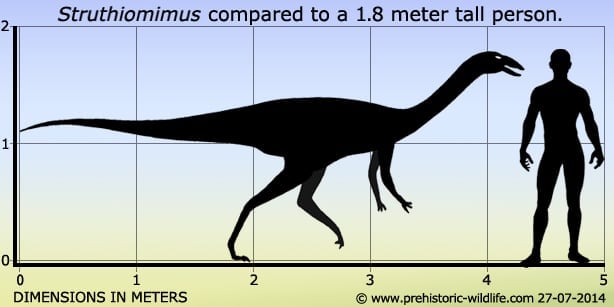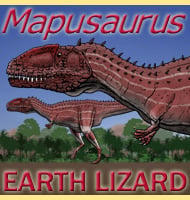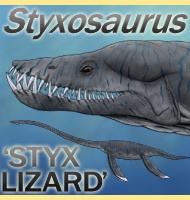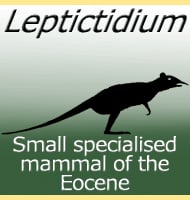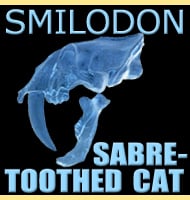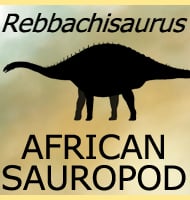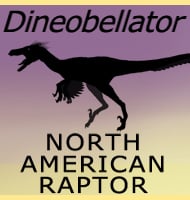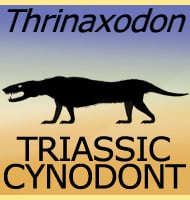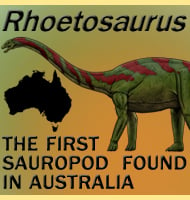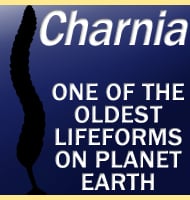Intro of Struthiomimus
Struthiomimus remains were actually known all the way back to 1901, but were interpreted by Lawrence Lambe to belong to Ornithomimus altus, the first ornithomimid to be named.
In 1917 however, Henry Fairfield Osborn (the man who is perhaps best remembered for naming Tyrannosaurus) identified key differences in the bones, especially the hands and renamed the remains as a new genus, Struthiomimus.
Despite the difference, Struthiomimus and Ornithomimus are still very much like one another, and between them they seem to have been the two most common types of ornithomimid active in North America.
The signature feature of Struthiomimus is the hand size in that the hands are proportionately longer in relation to the rest of the arm than in other known ornithomimid genera.
With this feature in mind, it’s possible that Struthiomimus may have had a greater reliance upon using its hands for feeding, although like with other ornithomimids this, what Struthiomimus ate remains a mystery to be certain.
Evidence of Feathers
Recent fossil discoveries have provided strong evidence that Struthiomimus and other ornithomimids had feathers.
In particular, specimens from the Upper Cretaceous of Alberta, Canada, have been found with preserved feather impressions.
These feathers were likely used for insulation and possibly display purposes, rather than flight.
The presence of feathers suggests that Struthiomimus may have had a more bird-like appearance than previously thought.
Dietary Insights
Beak Structure
Like with its close relatives, Struthiomimus had a keratinous toothless beak in life, which could have been used for a variety of different feeding strategies.
Osborn speculated that Struthiomimus was a selective browser that used this narrow beak to pick out the most nutritious parts of plants.
The hands could also have been used to reach around branches and pull down more of the plant to be within range of the mouth.
Dietary Shift
Other palaeontologists however have speculated that Struthiomimus may have been more insectivorous, using the beak to pick out large grubs and insects, while others have gone even further by suggesting that small reptiles like snakes and lizards as well as small primitive mammals may have also been tackled.
Earlier most prefer to think of Struthiomimus as an omnivore or insectivorous diet current evidence leans towards Struthiomimus being primarily herbivorous, though it may have been opportunistic in its feeding habits.
Omnivory however is the most likely dietary preference for a relatively small dinosaur like Struthiomimus.
The strictly herbivore niche would have been filled by large numbers of ceratopsian dinosaurs like Chasmosaurus as well as other dinosaur types like ankylosaurs such as Euoplocephalus and hadrosaurs like Edmontonsaurus.
The predatory niche would have also been filled by large tyrannosaurs such as Albertosaurus as well as smaller dromaeosaurs like Dromaeosaurus.
But by moving between these groups and adapting to different conditions, Struthiomimus would be able to coexist with these other forms, perhaps going some way to explain the large number of ornithomimid remains in general.
Gastroliths (Stomach Stones)
Some ornithomimid specimens have been found with gastroliths, indicating they swallowed stones to help grind plant material, a behaviour associated with herbivorous animals.
New Species and Reclassifications
The classification of Struthiomimus is a little muddled with many of the named species that were named throughout the twentieth century being reassigned to other ornithomimid genera.
2010 Renaming
The 2010 renaming of Ornithomimus edmontonicus to Struthiomimus edmontonicus by Gregory S. Paul has so far not found wide acceptance amongst palaeontologists and as such edmontonicus usually remains attributed to Ornithomimus.
Arkansaurus fridayi (2018)
This species represents the first dinosaur discovered in Arkansas, USA. Though not a species of Struthiomimus, it adds to the diversity of the ornithomimid family in North America.
Tototlmimus packardensis (2015)
Discovered in Mexico, this species expanded the known geographical range of ornithomimids into southern North America.
Updated Classification
Recent studies have refined the relationships within the Ornithomimidae family, clarifying the evolutionary history of Struthiomimus.
Struthiomimus is firmly placed within Ornithomimidae, distinct from closely related genera like Ornithomimus and Gallimimus.
List of some ornithomimosaurs
with new discoveries this list is likely to change, We will Update it Occasionally.
- Anserimimus (Goose mimic)
- Archaeornithomimus (Ancient bird mimic)
- Beishanlong (Beishan/White mountains dragon)
- Deinocheirus (Terrible hand)
- Gallimimus (Chicken mimic)
- Garudimimus (Garuda mimic)
- Harpymimus (Harpy mimic)
- Kinnareemimus (Kinnaree mimic)
- Ornithomimus (Bird mimic)
- Pelecanimimus (Pelican mimic)
- Qiupalong (Qiupa dragon)
- Shenzhousaurus (Shenzhous lizard)
- Sinornithomimus (Chinese bird mimic)
- Struthiomimus (Ostrich mimic)
- Aepyornithomimus tugrikinensis
- Nqwebasaurus thwazi
- Paraxenisaurus normalensis (2020)
Note: Qiupanykus zhangi, while sometimes mentioned in discussions about ornithomimosaurs, is actually classified as an oviraptorosaur, not an ornithomimosaur.
Environmental Context
Studies suggest that Struthiomimus inhabited diverse environments, including floodplains and coastal regions.
This ecological flexibility may have contributed to its success and widespread distribution during the Late Cretaceous.
New Discoveries
fossils of two ornithomimosaur specimens of different body sizes were reported from the Santonian Eutaw Formation in Mississippi, USA in 2022.
One of these specimens represents one of the largest known ornithomimosaurs worldwide.
A pathological metatarsal bone from a large-bodied ornithomimid, likely affected by a traumatic impact fracture followed by chronic osteomyelitis, was described from the same formation.
This finding provides insights into the health and injuries of these dinosaurs.
Extended Stratigraphic Ranges
Diagnostic ornithomimid fossils from the upper Maastrichtian Scollard Formation in Alberta, Canada, have extended the known stratigraphic ranges of both Ornithomimus and Struthiomimus in the region, indicating their presence from the upper Campanian Dinosaur Park Formation through to the Scollard Formation, spanning more than 10 million years.
Further Reading
- – Skeletal adaptations of Ornitholestes, Struthiomimus, Tyrannosaurus. – Bulletin of the American Museum of Natural History 35(43):733-771 – H. F. Osborn – 1916.
- – Struthiomimus brevetertius – A new species of dinosaur from the Edmonton Formation of Alberta. – Transactions of the Royal Society of Canada, series 3. 20(4): 65-70. – W. A. Parks – 1926.
- – Struthiomimus samueli, a new species of Ornithomimidae from the Belly River Formation of Alberta. – University of Toronto Studies, Geology Series 26:1-24. – W. A. Parks – 1928.
- – A new specimen of Struthiomimus altus from Alberta, with comments on the classificatory characters of Upper Cretaceous ornithomimids. – Canadian Journal of Earth Sciences 18:518-526. – E. L. Nicholls & A. R. Russel – 1981.
- van der Reest, A. J., & Currie, P. J. (2017). “New specimens of Ornithomimus from the Dinosaur Park Formation (Late Cretaceous) of Alberta, Canada, with insights into the ontogeny and variation in Ornithomimidae.” PLOS ONE, 12(5): e0176896.
- Kobayashi, Y., & Barsbold, R. (2006). “Ornithomimids from the Nemegt Formation of Mongolia.” Journal of the Paleontological Society of Korea, 22(1): 195-207.
- Kobayashi, Y., & Lü, J. C. (2003). “A new ornithomimid dinosaur with gregarious habits from the Late Cretaceous of China.” Acta Palaeontologica Polonica, 48(2): 235-259.
- McFeeters, B., et al. (2017). “A new ornithomimid theropod from the Dinosaur Park Formation of Alberta, Canada.” Journal of Vertebrate Paleontology, 37(2): e1312690.
Article History
- Updated and Re-Verified on 3rd Dec, 2024.
- Added Evidence of Feathers on 29th Nov, 2024.
- Added Arkansaurus fridayi (2018) and Tototlmimus packardensis (2015) Under New Species and Reclassifications on 29th Nov, 2024.
- Added Extended Stratigraphic Ranges on 27th Nov, 2024.
- Added New Discoveries on 27th Nov, 2024.
- Added 4 Under Further Reading on 25th Nov, 2024.
- Added 3 Ornithomimosaurs Lists in List of some ornithomimosaurs on 19th Nov, 2024.
- Updated Diet, earlier interpretations suggested an omnivorous diet, recent findings lean towards Struthiomimus being primarily herbivorous. Updated on 14th Nov, 2024 Under Dietary Insights.
- Added Gastroliths (Stomach Stones) under Dietary Insights on 14th Nov, 2024.
- Added Dietary Insights on 14th Nov, 2024.
- Updated on 13th Nov, 2016.
- Published on 1st July 2014.
